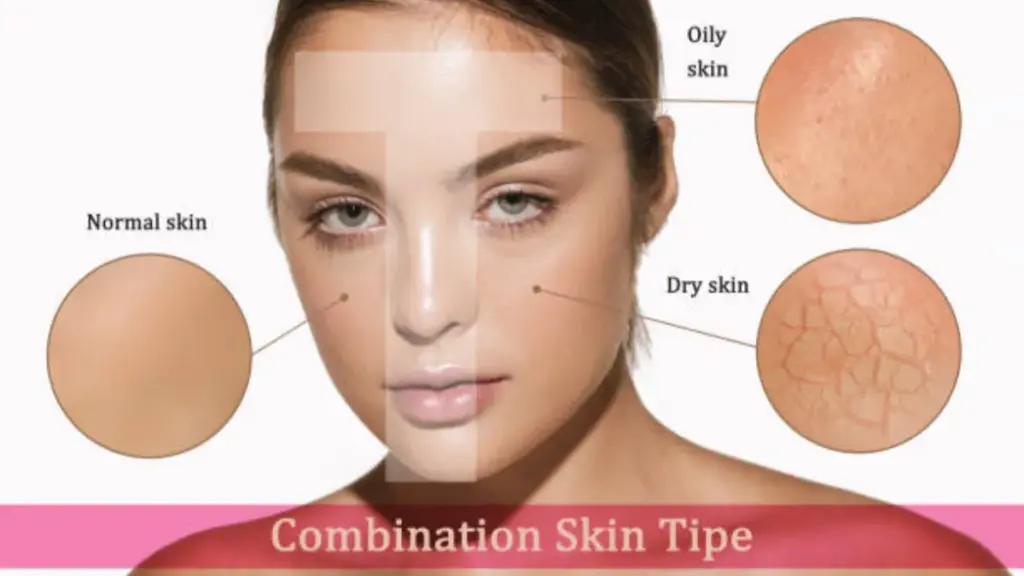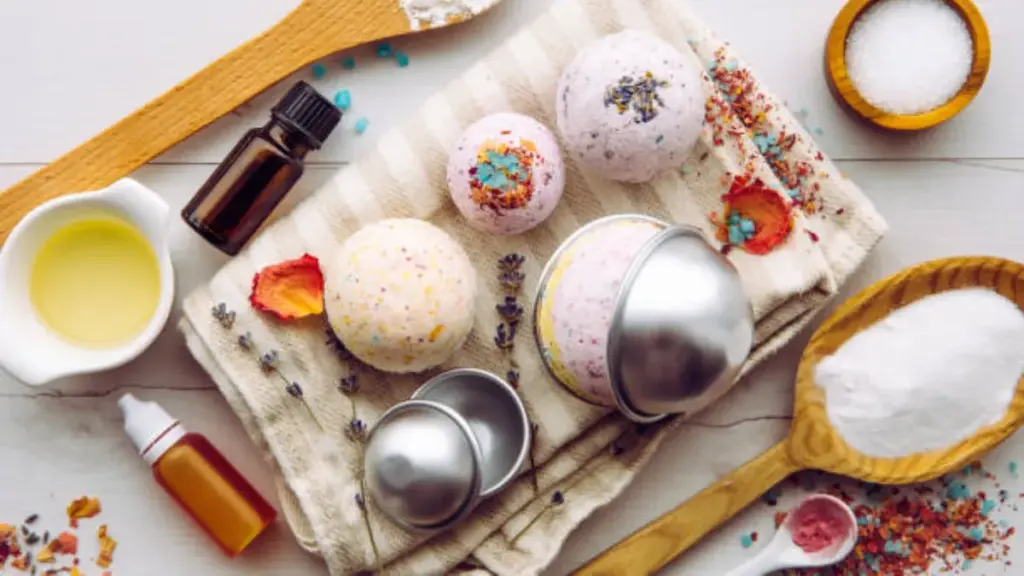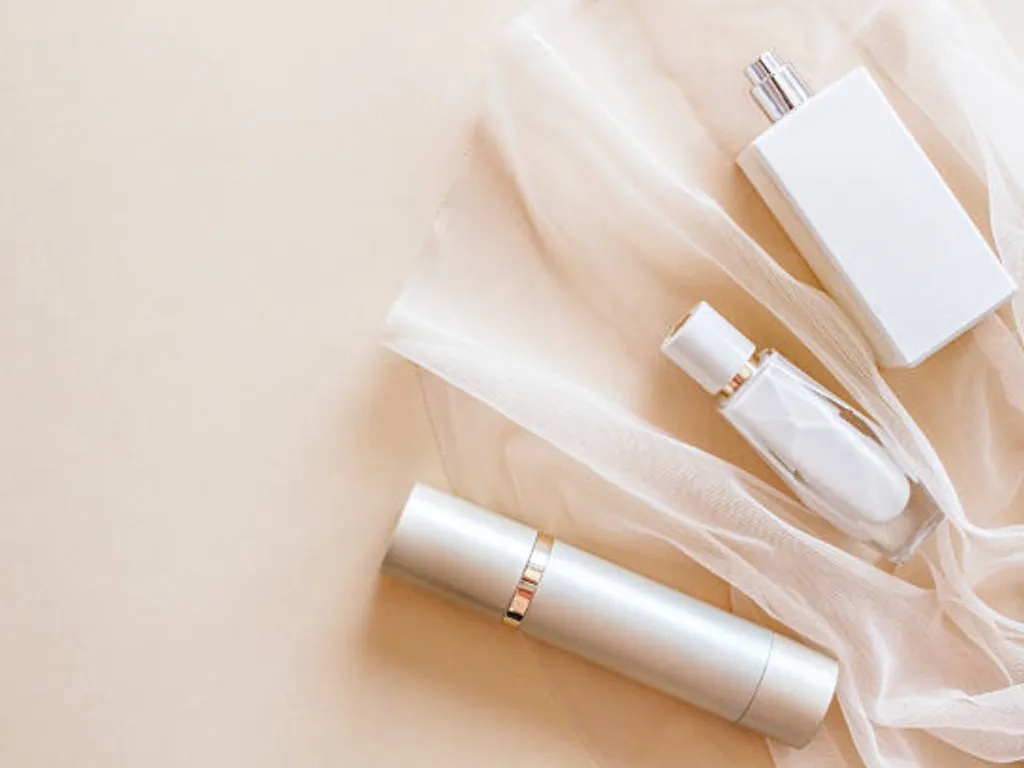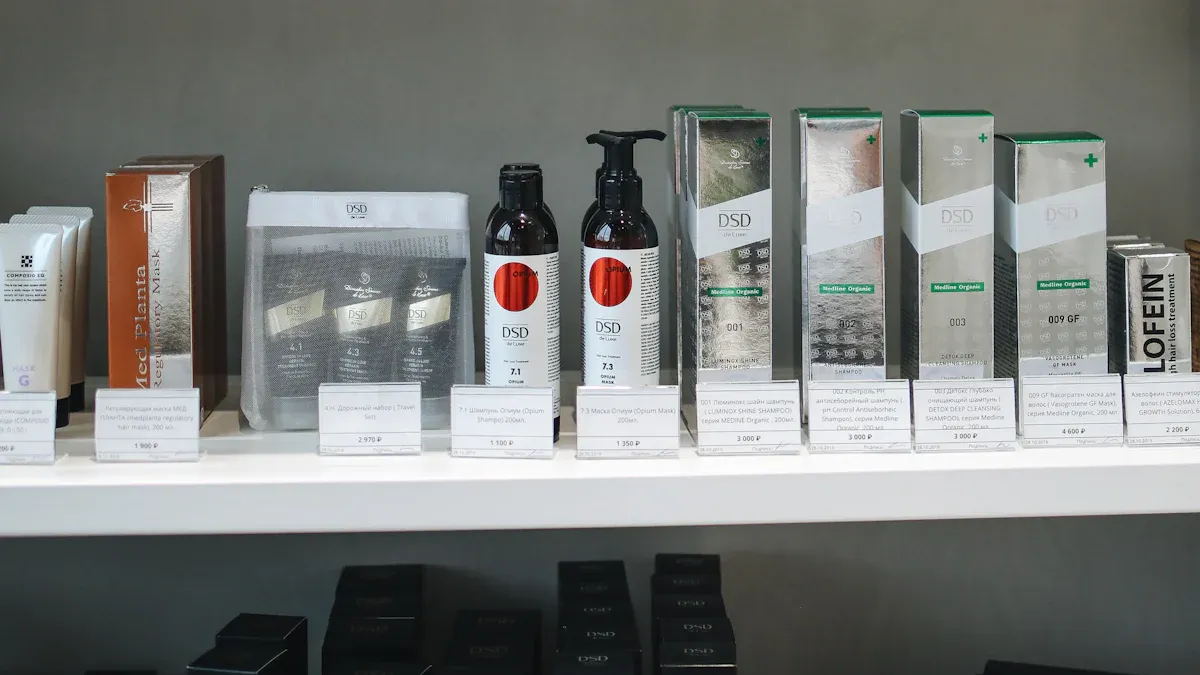
في صناعة التجميل, quality control plays a critical role in maintaining trust and loyalty. Ensuring your products meet safety and consistency standards protects customers and strengthens your brand’s reputation. Data shows that 58% of clients appreciate thorough service, بينما 48% rate service quality as nearly perfect. These numbers highlight how attention to detail improves customer satisfaction. By mastering quality control essentials, you can deliver consistent results, meet expectations, وتبرز في سوق تنافسية.
Quality Control Essentials for Beauty Brands
Defining Quality Control in Cosmetics
Quality control in cosmetics refers to the systematic processes and measures you implement to ensure your products meet safety, تناسق, and performance standards. It involves monitoring every stage of production, from sourcing raw materials to packaging the final product. By maintaining strict quality control, you can ensure that your cosmetics are safe, فعال, and compliant with industry regulations.
Quality management is crucial in the cosmetics industry to produce products that are safe, reliable, ومتسقة. Compliance with industry regulations and standards is fundamental to ensure safety and effectiveness.
To define quality control effectively, you must focus on three key areas: raw material testing, اختبار في العملية, and finished product testing. Each step ensures that your products meet the highest standards. على سبيل المثال:
Raw material testing: This step verifies the identity, purity, رجولية, and safety of ingredients before production begins.
In-process testing: During manufacturing, this process monitors critical parameters to maintain quality.
Finished product testing: This final step ensures the stability, performance, and overall quality of the product before it reaches the market.
By understanding these components, you can build a strong foundation for creating beauty products that meet customer expectations and regulatory requirements.
Key Benefits of Implementing Quality Control
Implementing quality control offers numerous benefits that directly impact your brand’s success. First and foremost, it ensures the safety and effectiveness of your cosmetics. By adhering to strict testing protocols, you can protect consumer health and enhance your brand’s reputation. This approach also reduces the risk of product recalls, which can damage trust and lead to financial losses.
Robust quality control measures also help you maintain consistency across your product line. Customers expect the same experience every time they use your products. By monitoring every stage of production, you can deliver consistent results that build loyalty and trust.
بالإضافة إلى ذلك, quality control supports compliance with regulatory standards. في الولايات المتحدة, على سبيل المثال, cosmetics must adhere to FDA regulations under the Federal Food, دواء, وقانون مستحضرات التجميل. Meeting these standards not only ensures safety but also positions your brand as reliable and professional.
Here are some key benefits of implementing quality control:
Preventing product recalls through rigorous safety protocols.
Identifying and addressing potential risks during production.
Strengthening your brand’s reputation by delivering high-quality products.
Enhancing customer satisfaction through consistent performance.
By prioritizing quality control essentials, you can create a competitive edge in the beauty industry. This commitment to excellence not only drives growth but also ensures long-term success in creating beauty products that customers trust.
Formulation Compliance and Safety
Meeting FDA and International Standards
Adhering to regulatory standards is essential for ensuring the safety and quality of your beauty products. In the United States, the FDA enforces strict guidelines under the Federal Food, دواء, وقانون مستحضرات التجميل. These regulations require you to ensure that your products are safe for consumer use and free from harmful substances. Internationally, compliance with standards like the EU Cosmetics Regulation or ISO certifications is equally important. These frameworks help you meet global safety expectations and expand your market reach.
To achieve regulatory compliance, you must stay updated on changing laws and guidelines. Regularly reviewing your formulation processes ensures that your products meet both local and international standards. This proactive approach not only protects your customers but also strengthens your brand’s reputation as a trustworthy beauty provider.
Avoiding Restricted Ingredients
Using safe ingredients is a cornerstone of quality control in the beauty industry. Many regulatory bodies, including the FDA and the European Commission, maintain lists of restricted or banned substances. Avoiding these ingredients is crucial for ensuring product safety and regulatory adherence. على سبيل المثال, substances like parabens, formaldehyde, and certain synthetic dyes are often restricted due to their potential health risks.
To avoid restricted ingredients, you should carefully review your formulation at every stage. Partnering with reliable suppliers who provide transparent ingredient information can help you maintain compliance. بالإضافة إلى ذلك, conducting regular audits of your ingredient lists ensures that your products remain safe and meet regulatory standards.
Collaborating with Certified Cosmetic Chemists
Certified cosmetic chemists play a vital role in ensuring the safety and efficacy of your formulations. Their expertise enhances the scientific credibility of your beauty products and ensures compliance with regulatory standards. By working with these professionals, you gain access to advanced knowledge about ingredient interactions and formulation techniques.
Collaboration with certified chemists also improves transparency in ingredient sourcing. They help you select high-quality materials that align with safety and regulatory requirements. Furthermore, chemists can conduct clinical testing to substantiate product claims, ensuring that your products deliver on their promises. This partnership not only elevates the quality of your formulations but also builds trust with your customers.
نصيحة: Partnering with certified cosmetic chemists ensures that your formulations meet the highest safety and quality standards, giving your brand a competitive edge in the beauty industry.
Sourcing High-Quality Ingredients

Selecting Reliable Suppliers
Choosing reliable suppliers is essential for creating high-quality beauty products. You need to conduct thorough research to identify suppliers who specialize in cosmetic ingredients and have a proven track record of delivering consistent quality. Building strong relationships with these suppliers ensures access to premium materials and keeps you informed about industry trends.
To streamline your sourcing process:
Look for suppliers with certifications like ISO or cGMP, which demonstrate their commitment to quality control.
Prioritize transparency by working with suppliers who provide detailed ingredient information.
Establish long-term partnerships to maintain consistency in your product formulations.
Reliable suppliers act as the backbone of your production process, helping you deliver products that meet customer expectations and regulatory standards.
Ensuring Ethical and Sustainable Sourcing
Ethical and sustainable sourcing not only enhances product quality but also strengthens your brand reputation. Consumers increasingly prefer eco-friendly beauty products, مع 65% willing to pay more for environmentally conscious options. By incorporating sustainability into your sourcing practices, you align with market demands and contribute to a greener future.
Here’s how you can embrace ethical sourcing:
Use organic and eco-friendly materials to reduce environmental impact.
Partner with suppliers who prioritize fair labor practices and sustainable farming methods.
Highlight your commitment to sustainability in your marketing to attract eco-conscious customers.
Brands that focus on ethical sourcing often experience higher repeat purchases, as customers value their dedication to environmental and social responsibility.
🌱 نصيحة: The eco-friendly beauty market is growing rapidly, offering significant opportunities for brands that prioritize sustainability.
Conducting Regular Supplier Audits
Regular supplier audits play a crucial role in maintaining ingredient quality and ensuring compliance with your standards. بواسطة evaluating suppliers’ quality management systems, you can identify those capable of delivering high-quality materials consistently. Clear communication of your quality requirements helps suppliers meet expectations, directly impacting the final product.
Key benefits of supplier audits include:
Ensuring adherence to quality control protocols.
Identifying areas for improvement in supplier performance.
Strengthening partnerships through open communication and collaboration.
Audits also help you stay proactive in addressing potential risks, ensuring your products remain safe and reliable for your customers.
ملحوظة: Regular assessments foster trust and accountability, creating a solid foundation for producing high-quality beauty products.
Quality Control Checklist for Testing Protocols
Types of Testing: Stability, Microbial, and Safety
Testing ensures your beauty products meet safety, جودة, and performance standards. A comprehensive quality control checklist includes stability testing, microbial testing, and safety verification. Each type of testing plays a vital role in maintaining product integrity and consumer trust.
Stability Testing: This process evaluates how your products perform over time under various conditions. It examines physical stability, such as color or texture changes, and chemical stability to ensure active ingredients remain effective. Packaging interaction is also assessed to confirm compatibility.
الاختبار الميكروبي: This step ensures your products remain free from harmful bacteria, yeast, or mold. It verifies the efficacy of preservatives and prevents contamination during storage and use.
Safety Testing: This testing confirms that your formulations are safe for consumer use. It includes patch tests to check for skin irritation and toxicity assessments to ensure no harmful effects.
نصيحة: Simulating consumer use patterns during stability testing can uncover hidden issues that may not appear in laboratory conditions.
In-House vs. Third-Party Testing
Deciding between in-house and third-party testing depends on your resources and goals. In-house testing offers control and flexibility, allowing you to monitor quality verification closely. لكن, it requires significant investment in equipment and trained personnel.
Third-party testing provides an unbiased assessment of your products. Certified laboratories follow standardized protocols, ensuring accurate results. This option is ideal for small brands or those seeking regulatory compliance in multiple markets.
وجه | In-House Testing | Third-Party Testing |
|---|---|---|
يكلف | High initial investment | Pay-per-service model |
Expertise | Requires trained staff | Access to certified professionals |
Objectivity | Internal bias possible | Independent and impartial |
ملحوظة: Combining both methods can enhance quality verification and ensure comprehensive testing coverage.
Establishing a Consistent Testing Schedule
A consistent testing schedule is essential for maintaining product quality and performance efficacy. Regular testing ensures your formulations remain stable, safe, and effective throughout their shelf life. Follow these steps to create a reliable schedule:
Conduct stability testing during product development and periodically after launch.
Perform microbial testing at key production stages to prevent contamination.
Schedule safety testing annually or when modifying formulations.
Documentation is critical for tracking results and ensuring compliance. Maintain detailed formulation documentation, including test results and quality control checklists, to demonstrate adherence to regulatory standards.
🌟 للنصيحة: Use software tools to automate testing schedules and streamline documentation processes, saving time and reducing errors.
Packaging Integrity and Labeling Accuracy
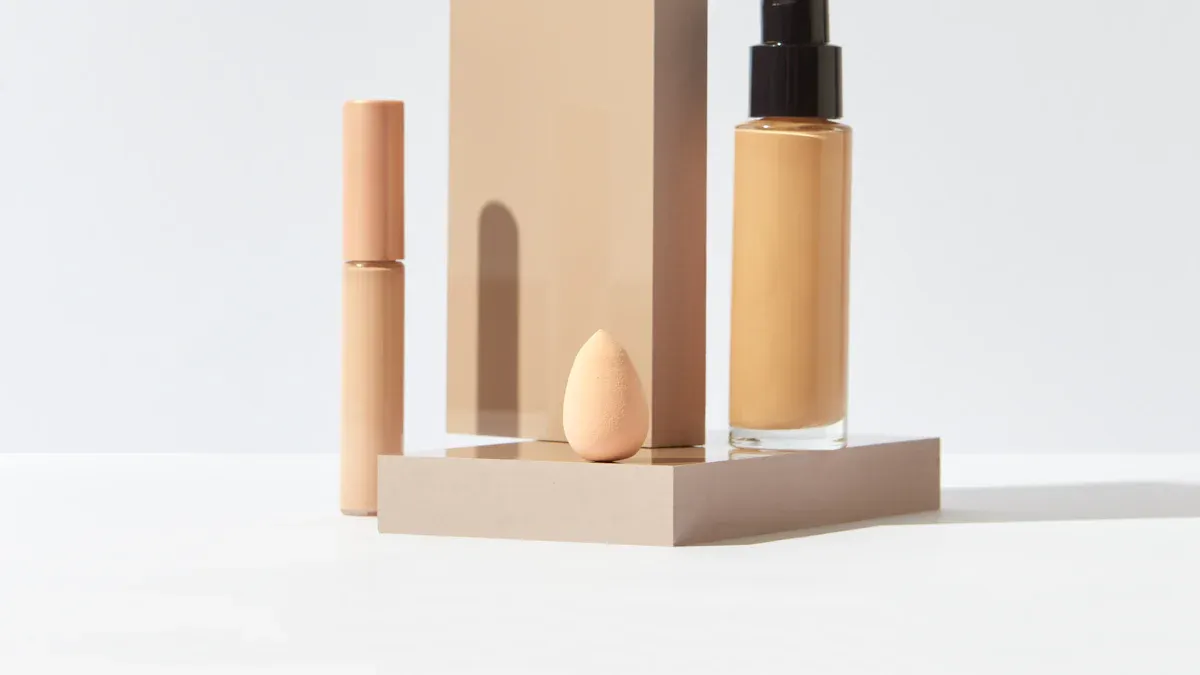
Choosing Durable and Safe Packaging
The packaging of your beauty products plays a critical role in maintaining their quality and appeal. Selecting durable and safe materials ensures your products remain intact during storage and transportation. Each material offers unique benefits and challenges, so understanding their properties helps you make informed decisions.
Plastic: Lightweight and cost-effective, plastic resists breakage but varies in durability depending on the type. It is widely recyclable, though its environmental impact can be a concern.
Metal: Highly durable and sustainable, metal offers a premium look. لكن, it is heavier and more expensive than other options.
Glass: Known for its aesthetic appeal, glass provides a luxurious feel. It is recyclable but fragile and heavy, making it less suitable for certain applications.
Material | Durability |
|---|---|
Glass | Can break easily |
Plastic | Does not break or dent |
Metal | Strong but might dent |
Choosing the right packaging material ensures your products remain safe while aligning with your brand’s image and sustainability goals.
Testing Packaging for Compatibility and Durability
Packaging must undergo rigorous testing to ensure it protects your beauty products under various conditions. Quality control tests simulate real-world scenarios to identify potential weaknesses.
Test Type | وصف |
|---|---|
Drop Test | Simulates impacts during handling by dropping packages from a specified height to check for damage. |
Compression Test | Mimics shipping pressures by applying controlled compression to ensure packages do not crack. |
Vibration Test | Replicates transportation vibrations to ensure closures remain secure and labels do not detach. |
Climate Test | Exposes packages to varying temperatures and humidity to assess their integrity under environmental stress. |
These tests ensure your packaging maintains its integrity, protecting the quality of your products and preventing costly damages.
Ensuring Accurate and Compliant Labeling
Accurate labeling is essential for building trust with your customers. Consumers expect transparency and clear information about the products they use. Mislabeling not only damages trust but also poses legal risks.
Provide essential details like ingredients, usage instructions, and safety warnings.
Ensure compliance with regulatory standards to avoid legal liabilities.
Use labels as tools for transparency, fostering confidence in your brand.
Effective labeling communicates your commitment to quality and authenticity. It reassures customers that your beauty products meet their expectations and safety needs.
تحسين مستمر في مراقبة الجودة
Leveraging Customer Feedback
Customer feedback is one of the most valuable tools for improving the quality of your beauty products. Listening to your audience helps you identify areas where your products may fall short and uncover opportunities for innovation. على سبيل المثال, if customers report issues with a product’s texture or scent, you can adjust the formulation to better meet their expectations.
To make the most of customer feedback, create multiple channels for communication. Encourage reviews on your website, social media platforms, and third-party marketplaces. Surveys and focus groups also provide deeper insights into consumer preferences. Once you gather this information, analyze it to identify recurring themes or concerns. Use these insights to refine your formulations, التعبئة والتغليف, or even your marketing strategies.
نصيحة: Responding to customer feedback promptly shows that you value their opinions. This builds trust and strengthens your brand’s reputation.
Training Teams on Quality Control Best Practices
Your team plays a critical role in maintaining the quality of your products. Proper training ensures that everyone involved in production understands the importance of quality control and knows how to implement best practices. This not only improves the consistency of your products but also reduces the risk of errors during manufacturing.
Start by providing comprehensive training sessions for new employees. Cover essential topics like testing protocols, ingredient safety, and packaging standards. For existing staff, offer regular refresher courses to keep them updated on the latest industry trends and regulatory changes. Hands-on workshops and real-world simulations can make these sessions more engaging and effective.
Encourage a culture of accountability by empowering your team to take ownership of their roles in quality control. Recognize and reward employees who demonstrate exceptional attention to detail or suggest improvements to existing processes. This fosters a sense of pride and responsibility, which directly impacts the quality of your beauty products.
ملحوظة: A well-trained team is your first line of defense against quality issues. Investing in their education pays off in the long run.
Using Technology to Streamline Processes
Technological advancements have revolutionized quality control in the beauty industry. By integrating modern tools into your processes, you can enhance efficiency, reduce errors, وضمان جودة المنتج متسقة. الأتمتة, real-time monitoring, and artificial intelligence (منظمة العفو الدولية) are some of the most impactful innovations.
Advancement Type | وصف |
|---|---|
الأتمتة | Automated testing systems like optical, acoustic, or thermal scanners detect defects and faults. |
Real-time Monitoring | Statistical process control (SPC) monitors variables like viscosity, PH, and temperature. |
AI Detectors | Analyze real-time sensor data to detect defects and optimize manufacturing processes. |
على سبيل المثال, real-time monitoring systems can measure the viscosity of a skincare cream during production. This ensures that every batch meets the same standards, preventing inconsistencies before they reach the consumer. بصورة مماثلة, AI-powered detectors analyze sensor data to identify potential defects, allowing you to address issues immediately.
Adopting these technologies not only improves the accuracy of your testing but also saves time and resources. Automated systems handle repetitive tasks, freeing up your team to focus on more complex aspects of quality control. This creates a more efficient workflow and ensures that your products consistently meet consumer expectations.
🌟 للنصيحة: Start small by implementing one technological solution at a time. Gradually expand as you see measurable improvements in your processes.
Partnering with Trusted Manufacturers
Benefits of Working with Certified Facilities
Certified manufacturing facilities offer measurable advantages that elevate your beauty brand’s operations. These facilities adhere to strict standards, ensuring your products meet regulatory requirements and maintain consistent quality. By partnering with certified manufacturers, you gain access to advanced processes that enhance efficiency and reduce costs.
Key metrics illustrate the benefits of working with certified facilities:
متري | وصف | Benefit to Certified Facilities |
|---|---|---|
Gross vs. Net Profit | Measures profitability through cosmetics manufacturing efficiency standards. | Indicates financial health and operational success. |
EBITDA Analysis | Evaluates operating profits focusing on operational KPIs. | Highlights efficiency in production processes. |
COGS Management | Monitors and controls costs to improve cost management. | Ensures sustainable pricing strategies. |
Break-Even & Cash Flow | Leverages pricing strategies for profitability. | Supports financial stability and growth. |
Customer Retention Rate | Measures loyalty and repeat purchase rates. | Enhances customer satisfaction and brand loyalty. |
Net Promoter Score | Gauges customer advocacy and satisfaction. | Indicates overall customer experience and loyalty. |
These metrics demonstrate how certified facilities contribute to operational success, financial stability, and customer satisfaction. By leveraging these benefits, you can streamline production and build a stronger foundation for your beauty brand.
How Oully Supports Beauty Brands with Quality Control
Oully’s expertise in quality control helps beauty brands deliver safe and reliable products. Operating from an FDA-, iso-, and cGMP-certified facility, Oully ensures every step of production meets the highest standards. Their team conducts rigorous testing to verify product safety, استقرار, والأداء.
على سبيل المثال, Oully has resolved challenges like misaligned chute systems causing spillage during production. By redesigning the chute and replacing skirt walls, they eliminated spillage and improved efficiency. In another case, Oully addressed severe wear issues in material handling systems by installing protective features and modifying slopes. These solutions enhanced system performance and increased customer satisfaction.
Oully’s commitment to quality control ensures your products meet consumer expectations while minimizing risks. Their proactive approach to problem-solving strengthens your brand’s reputation and builds trust with your audience.
Custom Solutions for Small and Large Brands
Oully offers tailored solutions to meet the unique needs of beauty brands, regardless of size. For small brands, their low MOQ options and fast production turnaround make it easier to bring products to market. Larger brands benefit from Oully’s scalable manufacturing capabilities and global reach.
Their customizable services include formulation development, تصميم التعبئة والتغليف, and dropshipping support. Whether you need assistance with ingredient testing or packaging compatibility, Oully provides end-to-end solutions that align with your vision. من خلال الشراكة مع أولي, you gain access to a reliable manufacturing partner dedicated to helping your brand succeed.
Mastering quality control is essential for growing your beauty brand and earning customer trust. By focusing on formulation compliance, مصادر المكونات, and rigorous testing, you ensure your products meet safety and performance standards. Continuous improvement through customer feedback and team training strengthens your processes and keeps your brand competitive.
Implement these strategies to deliver reliable beauty products that resonate with your audience. Partnering with trusted manufacturers like Oully simplifies production and ensures consistent quality. Take the next step toward building a brand that customers love and trust.
التعليمات
What is the role of quality control in beauty products?
Quality control ensures your beauty products are safe, فعال, ومتسقة. It involves testing ingredients, مراقبة الإنتاج, and verifying the final product. This process protects customers and builds trust in your brand.
How can you ensure your products meet safety standards?
You can meet safety standards by following regulatory guidelines, avoiding restricted ingredients, and conducting thorough testing. Partnering with certified cosmetic chemists also helps ensure compliance and product safety.
Why is sustainable sourcing important for beauty brands?
Sustainable sourcing reduces environmental impact and aligns with consumer preferences. Using eco-friendly materials and ethical practices enhances your brand’s reputation and attracts environmentally conscious customers.
What types of testing are essential for beauty products?
Stability, microbial, and safety testing are essential. Stability testing checks product performance over time, microbial testing ensures no harmful bacteria, and safety testing confirms the product is safe for use.
How does packaging affect product quality?
Packaging protects your products from damage and contamination. Durable and compatible materials maintain product integrity during storage and transport, ensuring customers receive high-quality items.

